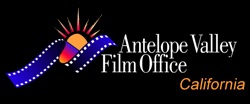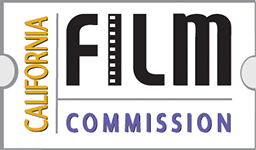Film Commissions
Film Commissions
Go here to post your Film Commission.
25% NON-TRANSFERABLE TAX CREDIT
Relocating Television Series (any episode length) that filmed its most recent season (minimum 6 episodes) outside California. $1 million minimum budget per episode. Credit is reduced to 20% after the first season filmed in California.
25% TRANSFERABLE TAX CREDIT
Independent Films: $1 million minimum budget; credits apply only to the first $10 million of qualified expenditures.
20% NON-TRANSFERABLE TAX CREDIT *
Feature Film: $1 million minimum budget; credit allocation applies only to the first $100 million in qualified expenditures.
Movies-of-the-Week and Miniseries: $500,000 minimum budget
New television Series for any distribution outlet; $1 million minimum budget per episode (at least 40 minutes per episode, scripted only)
TV Pilots: $1 million minimum budget (at least 40 minutes)
5% CREDIT UPLIFT
Projects eligible for a 20% tax credit may receive an additional 5% credit for the following expenditures:
Out-of-zone filming - Expenditures relating to original photography and incurred outside the 30-Mile Studio Zone (pre-production through strike). Eligible expenditures include qualified wages paid for services performed outside the Zone, and expenditures purchased or leased and used outside the Zone.
Music Scoring and music track recording by musicians
Visual Effects - To qualify, visual effects work must represent at least 75% of the VFX budget or a minimum of $10 million in qualified VFX expenditures incurred in California.
25% NON-TRANSFERABLE TAX CREDIT
Relocating Television Series (any episode length) that filmed its most recent season (minimum 6 episodes) outside California. $1 million minimum budget per episode. Credit is reduced to 20% after the first season filmed in California.
25% TRANSFERABLE TAX CREDIT
Independent Films: $1 million minimum budget; credits apply only to the first $10 million of qualified expenditures.
20% NON-TRANSFERABLE TAX CREDIT *
Feature Film: $1 million minimum budget; credit allocation applies only to the first $100 million in qualified expenditures.
Movies-of-the-Week and Miniseries: $500,000 minimum budget
New television Series for any distribution outlet; $1 million minimum budget per episode (at least 40 minutes per episode, scripted only)
TV Pilots: $1 million minimum budget (at least 40 minutes)
5% CREDIT UPLIFT
Projects eligible for a 20% tax credit may receive an additional 5% credit for the following expenditures:
Out-of-zone filming - Expenditures relating to original photography and incurred outside the 30-Mile Studio Zone (pre-production through strike). Eligible expenditures include qualified wages paid for services performed outside the Zone, and expenditures purchased or leased and used outside the Zone.
Music Scoring and music track recording by musicians
Visual Effects - To qualify, visual effects work must represent at least 75% of the VFX budget or a minimum of $10 million in qualified VFX expenditures incurred in California.
Located in California's picturesque Gold Country and spectacular High Sierra, Calaveras County offers a huge variety of stunning geological features, historic and agricultural settings for your production. Wide valleys, deep canyons, caves, lakes, giant sequoias, ghost towns and boutique wineries are just a few of the many features here.
The history of the area has contributed a great deal to its visual appeal. Originally settled by Miwok Indians, the area is a haven of lakes, streams, mountains, valleys and forests. When California's Gold Rush hit here in the heart of the Mother Lode, the landscape was changed by people from every corner of the world as they settled in hastily established camps in search of their fortunes.
Preserved Gold Rush towns, mining ruins, hydraulic mining and wooden flume systems rerouting water supplies permanently changed this rural landscape. Some of those settlements have remained to this day with their period architecture making charming historic downtowns with boutique shops, fine dining and wine tasting rooms. Others have fallen into ruin and are virtual ghost towns.
As the gold supply began to diminish, the people who'd discovered this place made more discoveries: of giant sequoia trees, caves and beautiful vistas. Along with outdoor recreation, they found other ways to entertain themselves including telling tall stories and betting on anything and everything. It was into this atmosphere that an adventurous young man arrived, and overhead a tale of frog jumping in the Angels Hotel.
That young man was Samuel Clemens and the story developed into his first successful short story that propelled him to fame as Mark Twain. "The Celebrated Jumping Frog of Calaveras," published in 1865 was the inspiration for the annual Jumping Frog Jubilee which takes place in Angels Camp every May, attracting in excess of 50,000 people. Meanwhile, other forms of entertainment were arising locally, including the annual Calaveras County Fair, the longest running state fair in California. Eventually those two events were combined, while other festivals and events sprung up around the county.
As even hard rock mining became harder work with fewer and fewer rewards, settlers had discovered that agriculture was especially productive here due to soil rich in minerals, making the decision to make Calaveras their permanent home a possibility. This resulted in one of California's earliest winemaking regions.
To this day, Calaveras' geological attractions, elevation changes from near-sea level to over 8,000 feet , historic features and Mediterranean climate make Calaveras County a major tourist destination for those looking for authentic California. This also makes it a prime filming consideration. With four distinct seasons featuring huge displays of wildflowers and blooming dogwoods in spring, spectacular fall colors and snowy winters, Calaveras county is your go-to filming destination, and we'll help you every step of the way.
California hosts nearly 200 feature films every year and countless TV series, commercials, and documentaries. The California Film Commission (CFC) facilitates all aspects of the filmmaking process and helps prevent filming problems from occurring. A regional network of 50 local film offices throughout the state provides logistical and permitting assistance for filmmakers. The CFC also maintains CinemaScout, an on-line database that features over 4000 California locations available for filming.
California is home to the largest and most highly skilled film crews in the world; able to sustain over 100 simultaneous productions.
As other destinations offer incentives from a local level up to a state-wide level, we can compete on the local level by offering attractive deals on exclusive services and housing for your crews and stars.
The Palm Springs Bureau of Tourism can assist with any questions and assistance with tourism partners that you may need. Contact Sarah Hahne or 760-322-8425.
The City of San Diego understands that productions may take place within a short planning timeframe and may involve a number of locations that include public and private property. We offer a suite of services to assist you in obtaining the proper authorization to film within the City of San Diego, while providing online resources for the local film industry.






